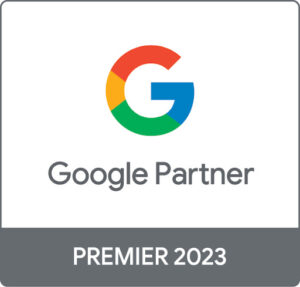The Art of Understanding Consumer Behaviour
In 2017, understanding consumer behaviour is an essential ingredient for anyone working within the SEO, PPC and all other formats of digital marketing spectrum.
But what’s really interesting to us as an SEO agency is the relationships between psychology, consumer behaviour and search marketing.
But psychology and marketing have been linked forever – what’s so different about it now?
Unfortunately, the SEO industry isn’t quite as married to psychology as it should and could be. In the early days of SEO, manipulating page content for the top spots in Google was fairly primitive.
In today’s SEO landscape, that approach simply not enough – you absolutely have to understand why their customers search for the topics they do, and then meet the motivations and expectations they have when they click-through to your landing page.
Google evolves its algorithm to meet changes in user behaviour
When we’re making a decision on whether or not to purchase a product or service, our brains go through a vastly complicated cocktail of thoughts, emotions and motivations as to why we should or shouldn’t commit to that purchase.
So, researching and learning the behaviours, intentions and decision making process of your online consumers is absolutely vital to the success of your website’s SEO and, therefore, profitability.
Every year or so Google develops and publishes a major update to its ranking algorithm. The ever-evolving search algorithm has kept SEOs and digital marketers on their toes since 2005, after Google launched its ‘personalised search’ algorithm update.
The update was the first time Google released tweaks to its core product that were completely tailored for customer satisfaction and improved customer experience, rather than focusing on business needs.
In a nutshell, Google’s personalised search update used your search history to deliver better results for you. After that, in 2010, we had the Social Signals update which used data from our social media channels to understand how we shopped and what we looked for on the Internet.
Since then, there have been at least four or five ‘major’ Google algorithm updates (and plenty of minor tweaks between), each of which have drastically affected consumer experiences:
- Panda, 2011 – people are unhappy with the poor results and misleading information that appeared at the top of SERPs. Google releases Panda to knock down sites with poor quality content.
- Penguin, 2012 – SEOs abuse backlinks, which leads to poor user experience and loads of spam for search engine users. Google releases Penguin to punish sites that purchased links.
- Hummingbird, 2013 – people are having to type in multiple variations of keywords to get desired results. Google releases Hummingbird to better understand the user’s intent.
- Mobilegeddon, 2015 – as mobile browsing increases dramatically, Google releases its first major mobile-first algorithm update to prioritise ‘mobile friendly’ websites.
With Google clearly making such a significant shift towards providing results to aid the decision making process of consumers online; shouldn’t we, as SEOs and digital marketers, understand the same psychological elements that will continue to change the landscape of search marketing?
Using Google’s “Do, Know, Go” model
Like many early adopters of SEO, my philosophy to search marketing was rooted on Google’s three core principals of search intent. In other words, you can categorise the different types of search query into three classes – transactional, informational and navigational.
Or, as Google’s brand guidelines puts it – do, know and go.
- Transactional Search (do) – the user searches for something to interact with like purchasing, downloading, installing, enrolling in, etc. something they were looking for. Eg. “Buy cheap flights to New York city”.
- Informational Search (know) – the user is looking for a very specific piece of information, usually non-transactional and more research focused. Eg. “What’s the weather like in Spain in May?”.
- Navigational Search (go) – the user is looking for a particular website and/or company information. Brand related searches Eg. “Seed Publicity SEO agency”.
So for years this model was enough for know-how SEOs to help Google index and rank the best websites around the world.
The logic behind this thought process provided huge insight into the user’s intent for a search query and how the appropriate landing pages should be formed for those queries on your site.
It took the whole onsite SEO process to another level – from keyword research and onsite optimisation right through to content creation and earning links from relevant sites.
The basic principle of the ‘Do, Know, Go’ model has been revisited and revised by SEOs over the years but the fundamental concept remains largely the same. What has changed, however, is how Google delivers its SERPs to users and, therefore, we’re beginning to see changes in how people use search engines.
Using the customer decision making process
Generally, the typical lifecycle of an online consumer using search to alleviate or solve a problem follows a 5-step process:
- Problem recognition – someone identifies that they have a problem they need solving (transactional, navigational or informational).
- Information search for solutions – they then use a search engine to find the answer to that problem. Also worth noting that up to 93% online experiences actually begin with a search engine.
- Evaluation of alternative solutions – the person then researches and evaluates alternative solutions for their problem – what is the best option for me? What do I value the most?
- Purchase – they continue to purchase once they have made a decision to do so. Often users will not anticipate making a purchase immediately, and will consider the value of what they are purchasing before doing so.
- Post-purchase evaluation and behaviours – if they are unsatisfied with their purchase, or have a bad experience, they may return the product and/or leave negative feedback about your company. However, the same is true of customer loyalty and positive experiences.
Using Bain & Co.’s 30 Elements of Customer Value
New research from Bain and Company, published in the September 2016 issue of the Harvard Business Review, has expanded Maslow’s famous hierarchy of needs by identifying 30 fundamental attributes of consumer decision making, which they’ve called “The 30 Elements of Value Pyramid”.
The model comprises of 30 elements of value which have been identified to help companies gain an edge with their customers. These 30 elements have been organised into four our main categories:
- Fundamental – anything that offers basic benefits that help us (consumers) with the most fundamental elements of our human needs.
- Emotional – anything that offers that meets our emotional needs.
- Life changing – anything that offers much grander, specifically life changing value to our needs.
- Social impact – anything that affects and benefits society and others, or even changes the world.
Bain & Co. suggest that “the more of these elements a company can deliver on, the higher customer loyalty and revenues soar”, and I have to agree with them.
Understanding what customers value can help companies improve their offerings, create new ones or even identify gaps that competitors might try to exploit.
Combining SEO with psychological principals of persuasion
In Dr. Robert Cialdini’s book, Influence, he talks about the 6 principals of persuasion, which marketers can use to leverage and nudge customer’s decision making:
- Reciprocity – people are more likely to do something for you if you do something for them first.
- Affinity – people are more likely to trust people and brands that hold similar values to themselves.
- Authority – people are more likely to listen to you if you are a reputable person/company/brand.
- Social Proof – people are more likely to do something if others have done it before them.
- Rarity – if something feels like it’s rare or a ‘limited edition’, people will place a higher value to it.
- Commitments – if you can get someone to commit to something with you first, no matter how small, then they’re more likely to make a bigger commitment with you in the future.
Creating a new SEO framework
My next task is to put all of this together into a comprehensive framework. The overall ambition is to make use of this framework as part of our internal SEO process when researching keywords and optimising sites.









